Places In Blues History
As part of our Places In Blues History section, here is a page on Ralph Lembo’s store in downtown Itta Bena, Leflore County, Mississippi.
Itta Bena is a small town of about 2,000 people. B.B. King was born nearby.
Itta Bena has another historical site of interest to Blues fans: the store operated by Ralph Lembo in the 1920’s and 1930’s. This store is still standing at 114 Humphreys Street in downtown Itta Bena.
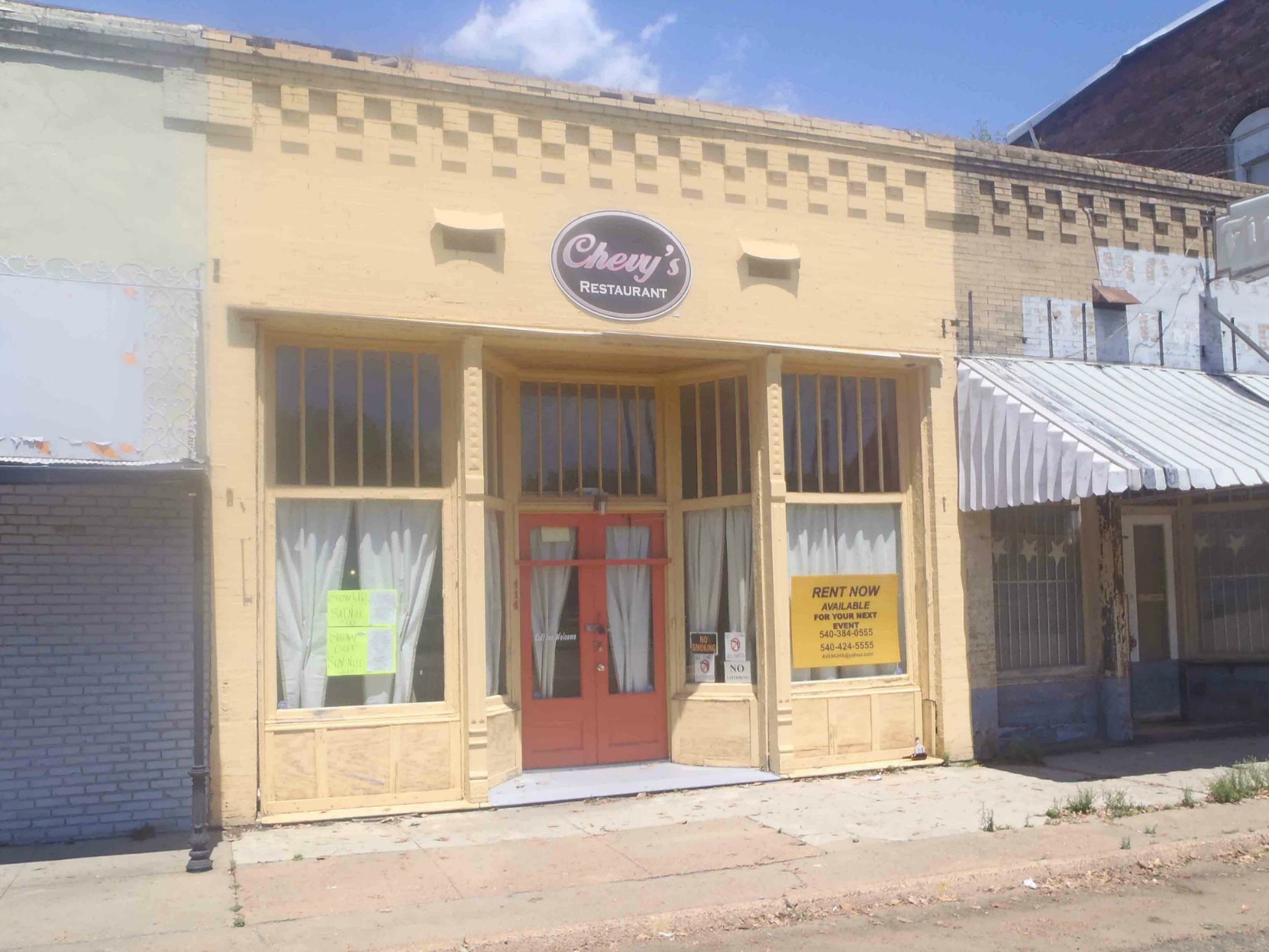
The GPS location of the former Ralph Lembo store is: N 33° 29.723′ W 90° 19.173′
Here is a Google Maps image showing the location of the former Ralph Lembo Store at 114 Humphreys Street in downtown Itta Bena.
Ralph Lembo operated a furniture and music store at this site but also had a sideline as a blues promoter and a talent scout for record labels, including Paramount, Okeh and Columbia.
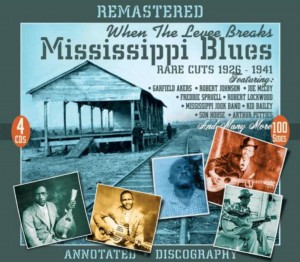
One of the artists for whom Ralph Lembo secured a recording session was Booker “Bukka” White.
Another was Rube Lacey.
(For the early Bukka White recordings we recommend Legends of Country Blues on JSP Records; for the Rube Lacy recordings we recommend Mississippi Blues Rare Cuts 1926-1941 on JSP Records)
Here are links to Yazoo Records digital download versions of the two Rube Lacey sides associated with Ralph Lembo:
Ralph Lembo also brought some prominent blues performers, like Blind Lemon Jefferson, to Itta Bena. Blind Lemon Jefferson apparently performed in Ralph Lembo’s store circa 1927.
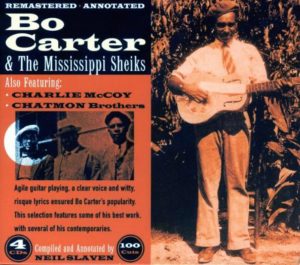
Ralph Lembo also played a major role in making the first recordings of the Mississippi Sheiks, one of the most influential Mississippi bands in the 1930’s.
Circa 1929, Ralph Lembo heard Walter Vincson and Lonnie Chatmon playing at a dance in Itta Bena. He arranged a recording session for them in Shreveport, Louisiana with Polk Brockman of Okeh Records. The name “Mississippi Sheiks” was apparently decided at this Shreveport recording session for Okeh Records.
Walter Vincson said that the Mississippi Sheiks best known recording, Sitting On Top Of The World, was written in Itta Bena, possibly at the same time as Ralph Lembo first heard them.
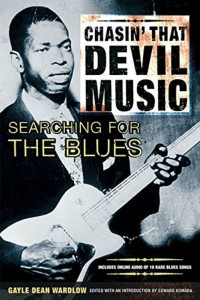
Blues researcher and historian Gayle Dean Wardlow suggests Ralph Lembo could have been more successful as a blues talent scout if the blues musicians had more trust in him.
“There was a man in Itta Bena, Mississippi,” said Wardlow in a 1991 interview, “called [Ralph] Lembo – had a record store and sold Victrolas and furniture. He picked up two or three artists in 1927. He picked up Rube Lacey, and he picked up Washington White [Booker “Bukka” White] for his first Victor session in 1930. So he got some talent. But he tried to get [Charley] Patton to go and record for Columbia, and Patton wouldn’t go because of Lembo’s reputation – he didn’t trust him.”
Blues historian T. DeWayne Moore has published new research which contradicts Gayle Dean Wardlow’s comments on Ralph Lembo. T. Dewayne Moore’s article presents Ralph Lembo in a totally different light than does Gayle Dean Wardlow.
You can link to T. DeWayne Moore’s article on Ralph Lembo here [note: PDF]
David “Honeyboy” Edwards’ autobiography also mentions Ralph Lembo’s store.
“When I was young and my daddy was out in Itta Bena, ” recalled Honeyboy Edwards, “I used to go into Ralph Lembo’s store and push the broom around. Ralph Lembo had a furniture store, like H.C. Speir, and he used to record musicians, too. I got tired of waiting for him [to arrange a recording session] and quit going there.”
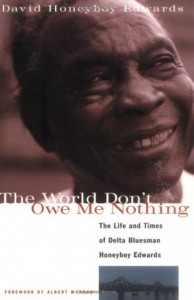
At the time of writing, there are no Mississippi Blues Trail or Department of Archives and History commemorative markers in Itta Bena. We think there should be.
Coincidentally, the Mayor of Itta Bena, Thelma Collins, contacted us on 9 May 2016 through the Contact Form at the bottom of this page. She advised us that she wants to get a Mississippi Blues Trail marker in Itta Bena.
We sent Mayor Collins an email suggesting that Ralph Lembo’s store would be a good site for a future Mississippi Blues Trail marker.
We also advised Mayor Collins to contact the Mississippi Department of Archives & History about the possibility of getting one or more Mississippi Department of Archives & History markers in Itta Bena.
The photos below show more of the street block in which Ralph Lembo’s former store is located. It appears most of the buildings in the block were standing when Ralph Lembo was in business here in the 1920’s and 1930’s.
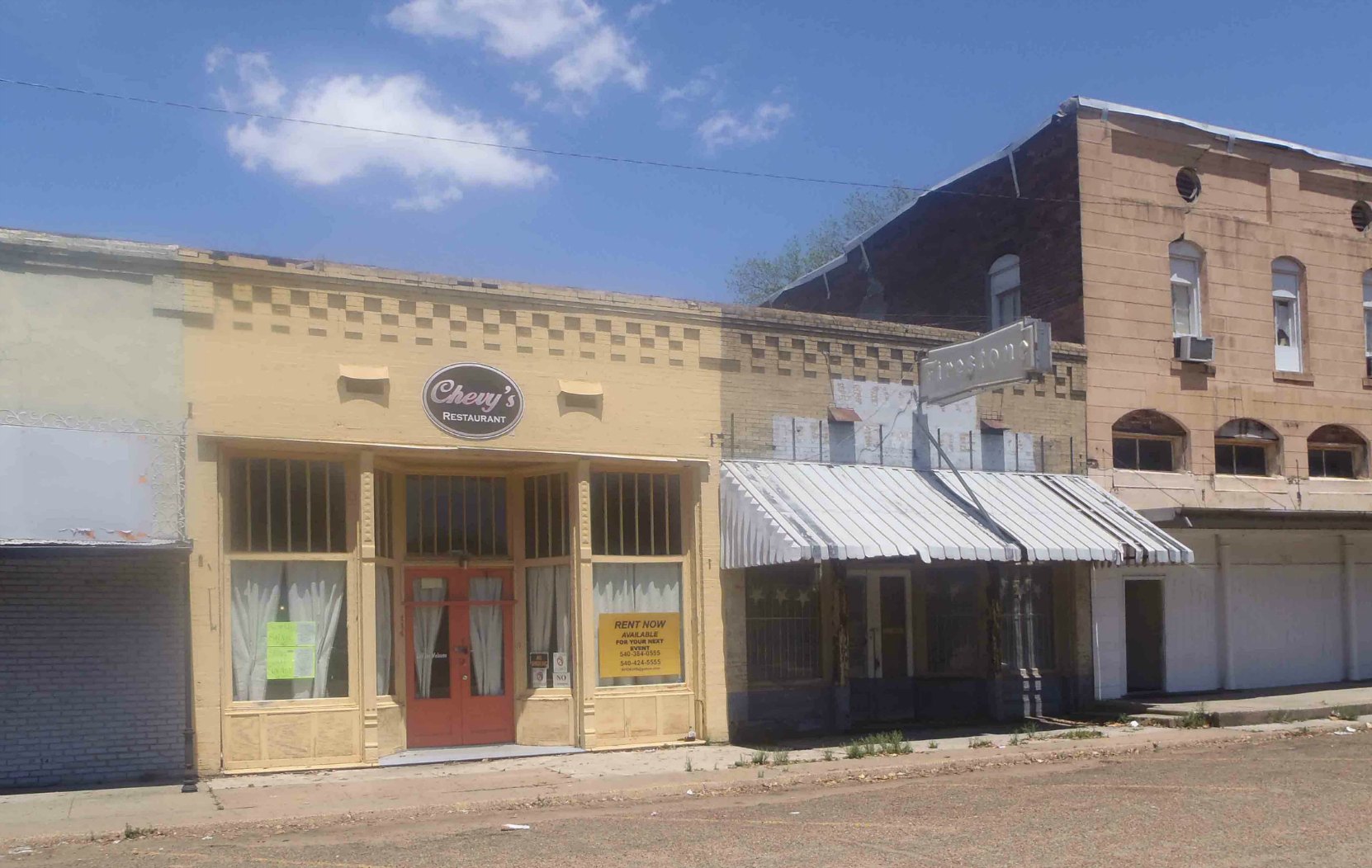
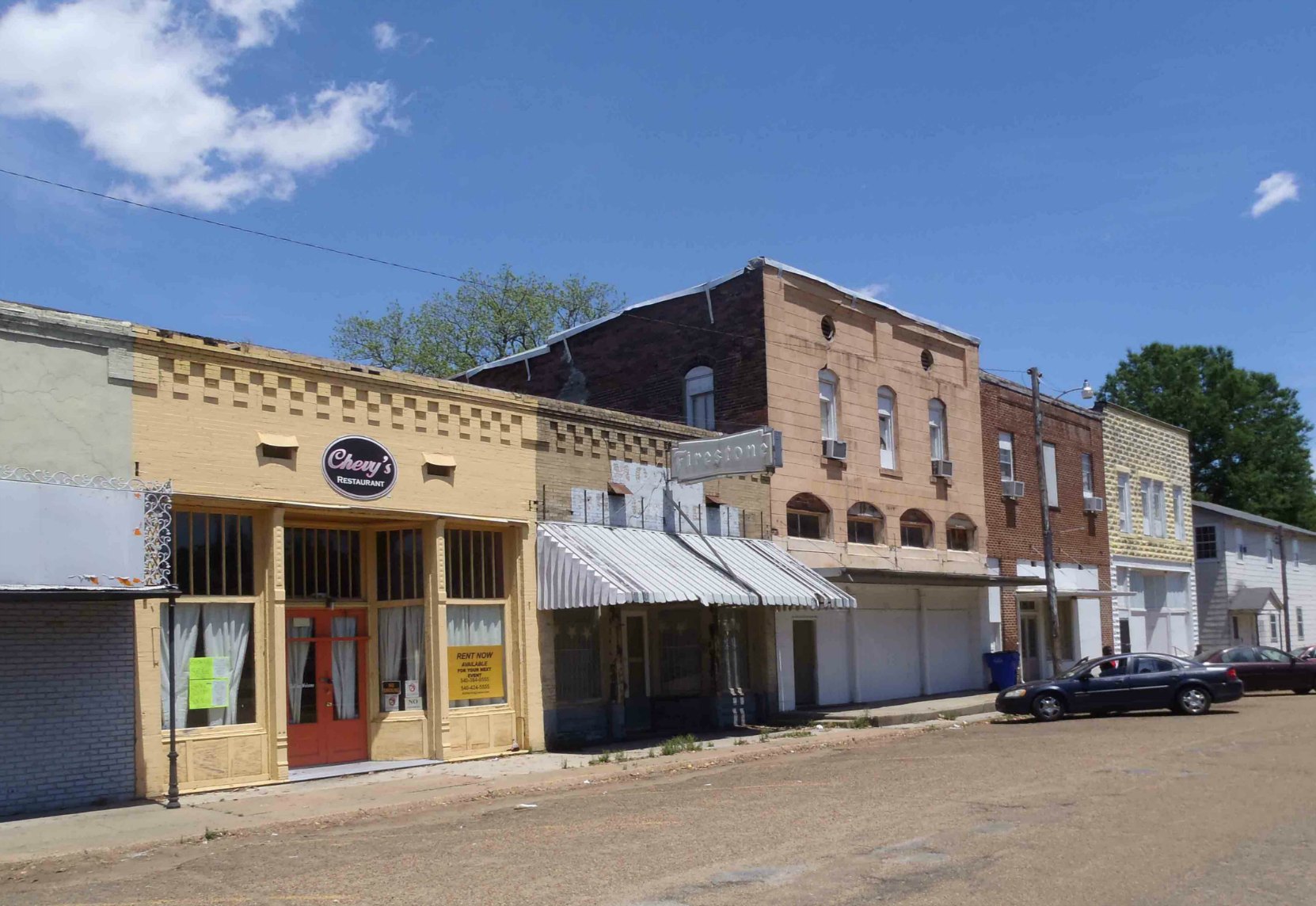
With many of the buildings of that era still being extant in downtown Itta Bena, it is not difficult to imagine how Humphries Street looked in Ralph Lembo’s day.
The photo below shows the Itta Bena City Hall on Humphries Street west of Ralph Lembo’s store.
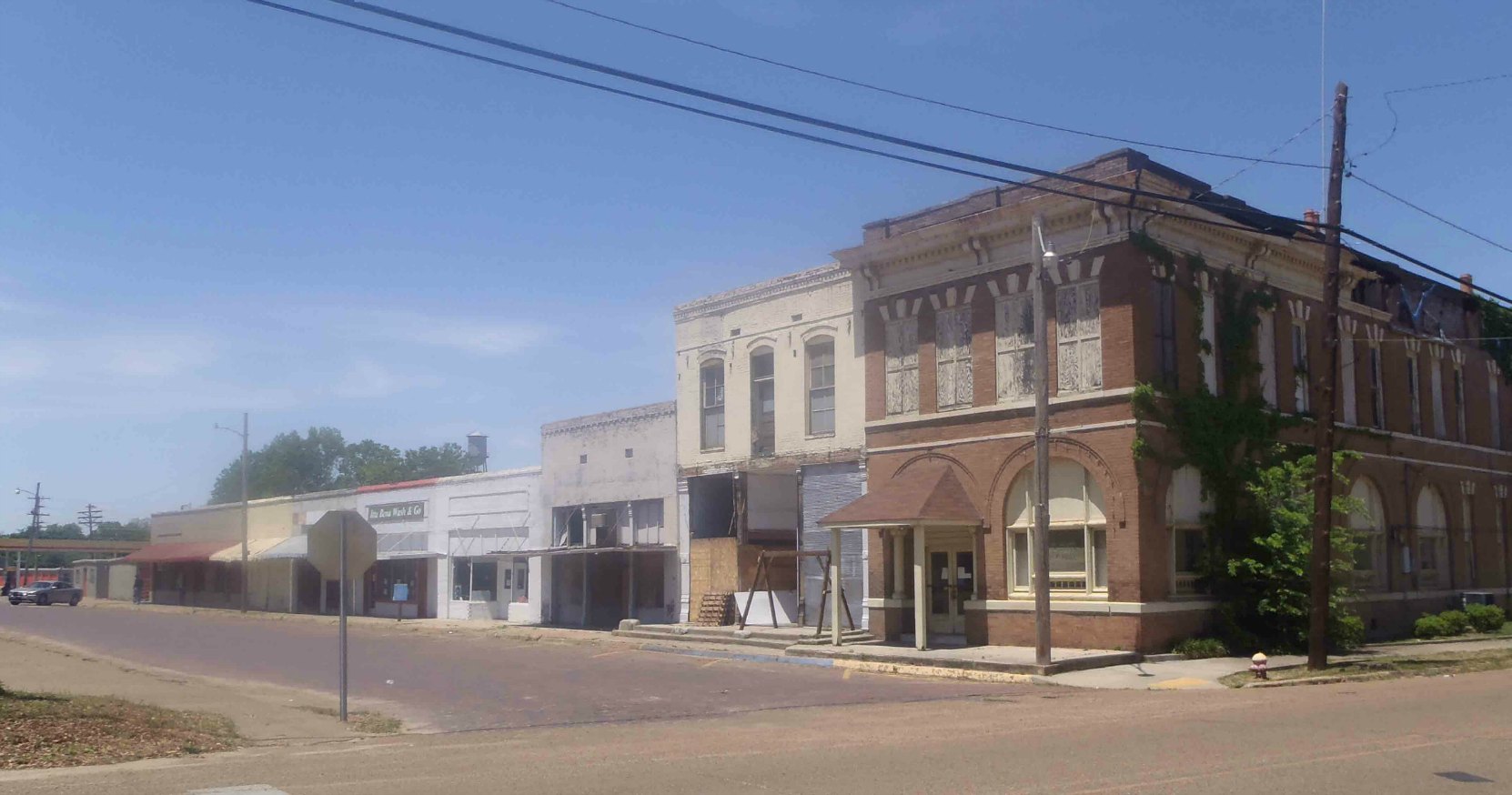
Update -January 2017: T. DeWayne Moore of the Mt. Zion Memorial Fund contacted us and told us about his latest research on Ralph Lembo. The Mt. Zion Memorial Fund has located an advertisement for the Ralph Lembo Music Store in a December 1928 issue of the Greenwood Commonwealth newspaper which shows that Ralph Lembo actually had three music stores in Leflore County at that time, rather than just this one store in Itta Bena which blues historians had previously identified.
Here is a copy of the December 1928 advertisement in the Greenwood Commonwealth:
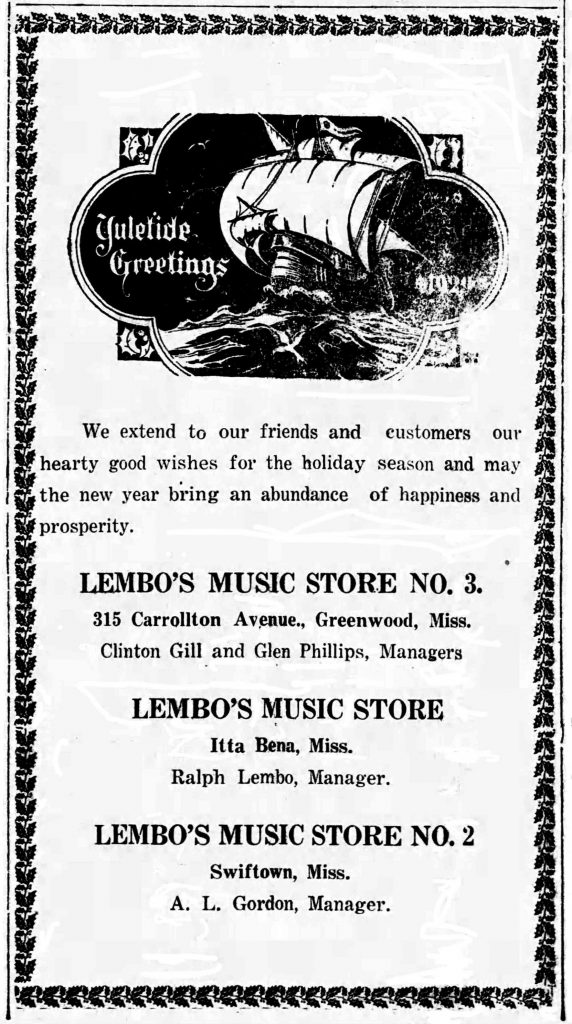
As shown in this newspaper advertisement, the Ralph Lembo Music Store No. 2 was in Swiftown, Mississippi and the Ralph Lembo Music Store No. 3 was at 315 Carrollton Avenue in Greenwood, Mississippi.
Here is a Google Maps image of 315 Carrollton Avenue, Greenwood, Mississippi taken in June 2016. It appears the original building facade is still in place but the interior was undergoing a major renovation in the summer of 2016.
Here are YouTube videos of the two Rube Lacey recordings associated with Ralph Lembo.
First, Ham Hound Crave, recorded in 1928. Ralph Lembo is briefly heard on backing vocal on this one.
Mississippi Jail House Groan, recorded in 1928.
Here’s a YouTube video of the Mississippi Sheiks’ Sitting On Top Of The World, which Walter Vincson said was written in Itta Bena.
Another Interesting Architectural Feature of the Ralph Lembo Store
The iron support columns on either side of the doorway of 114 Humphries Street are another interesting architectural and historic feature of this building.These iron support columns were a common feature of North American commercial buildings in the 19th and early 20th centuries.
The columns were decorative but also supported the weight of building’s brick frontage and allowed the frontage space to be opened up rather than being closed in with load bearing structure devoted to supporting the weight of the roof and the brick wall. This allowed more street frontage to be devoted to large display windows instead of structural support.
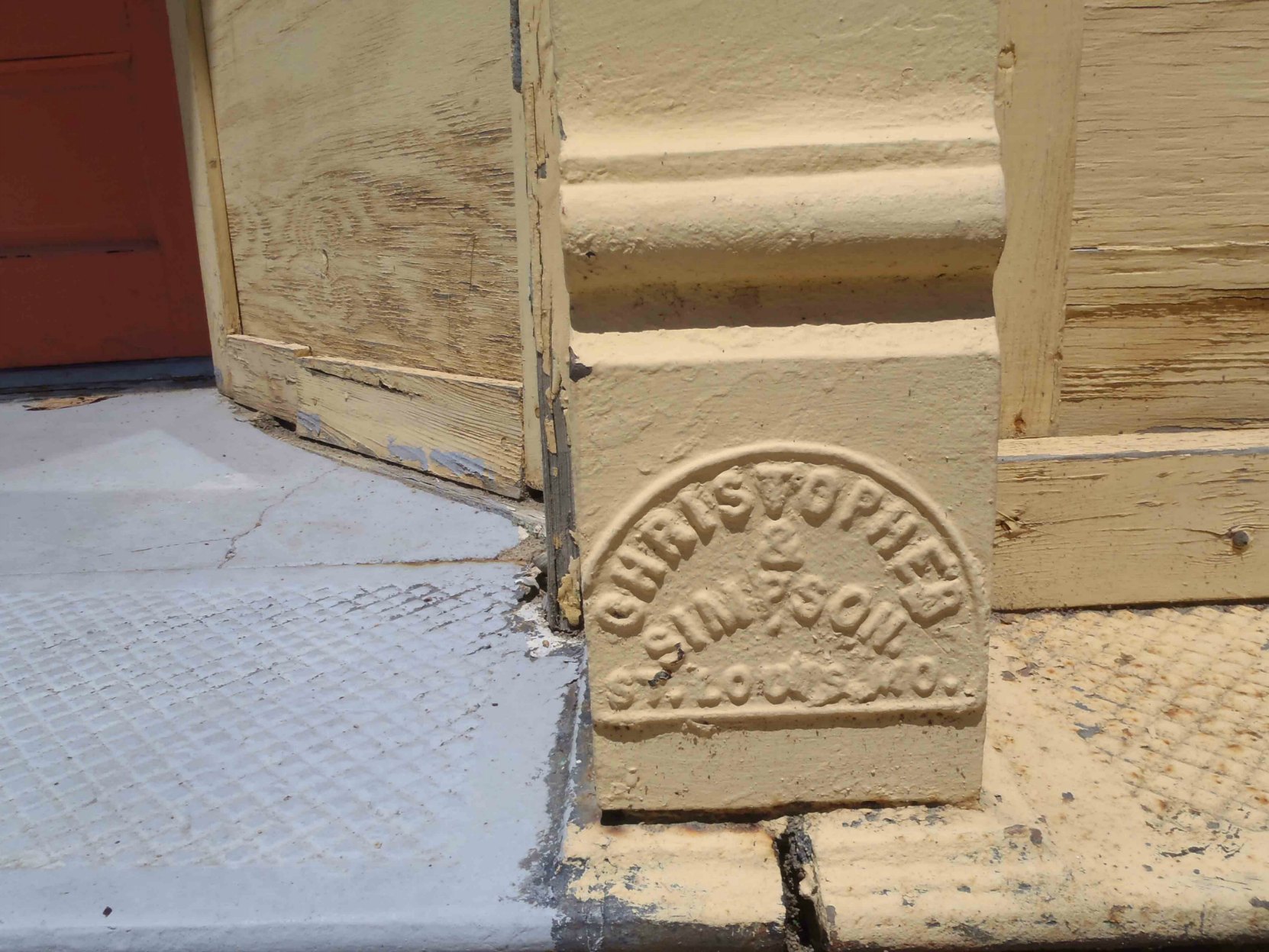
These iron support columns were a typical product of foundries throughout North America. It was very common for foundries to put their name somewhere on the column, typically on the bottom of the street facing side of the column, where it could be seen by passersby who cared to look. At the time these columns were manufactured, it was inexpensive advertising for the foundry. For architectural historians, it is a simple but effective way of tracing these building components to a particular source.
The iron support columns on either side of the doorway of the former Ralph Lembo store display the name of the foundry which cast them. The foundry’s name, Christopher & Simpson, St. Louis, Mo., is still clearly visible at the bottom of the each column, just above the sidewalk. The full name of this St. Louis, Missouri foundry was the Christopher & Simpson Architectural Iron and Foundry Co.
St Louis City Directories from the 1890’s show the Christopher & Simpson Architectural Iron and Foundry Company had a manufacturing facility on “Park av ne corner 9th” in St Louis, Missouri. The company’s President, Jacob Christopher lived at 2102 Lafeyette Ave., St. Louis. This building is still extant.
This may be of interest to many of our readers interested in history and/or architecture so, for those who are interested, here are some websites containing more information about the Christopher & Simpson Architectural Iron and Foundry Co. in St. Louis:
- Exploring St. Louis ;
- Photo gallery of extant iron columns , including Christopher & Simpson storefront columns, in various US cities ;
- information about Jacob Christopher, president of Christopher & Simpson;
- Gould’s St. Louis City Directory, 1890 listing ;
- Christopher & Simpson Catalogue, 1888 ;
- American Law Register & Review, Nov. 1894 (detailing a lawsuit against the company) ;
- Mesker Brothers (another St. Louis foundry) ;
- University Thesis on Mesker Brothers ;
- Preservation In Mississippi post on maintenance and restoration of architectural ironwork;
Recommended Recordings
For the recordings by Rube Lacey and Booker “Bukka” White mentioned on this page, we recommend:
For Rube Lacy, Mississippi Blues Rare Cuts 1926-1941 on JSP Records….Read More…
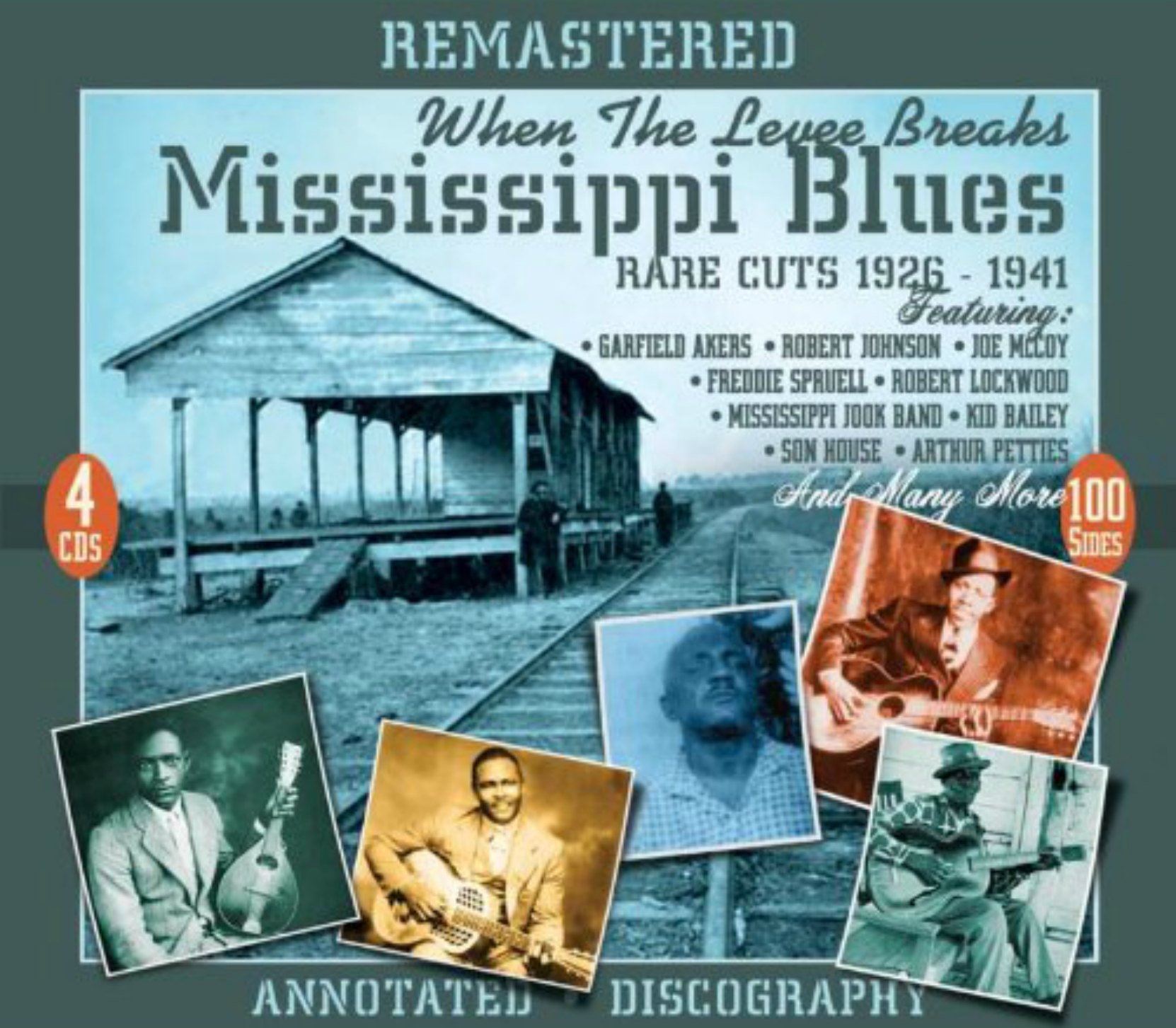
For the Booker “Bukka” White 1930 recordings, Legends of Country Blues on JSP Records
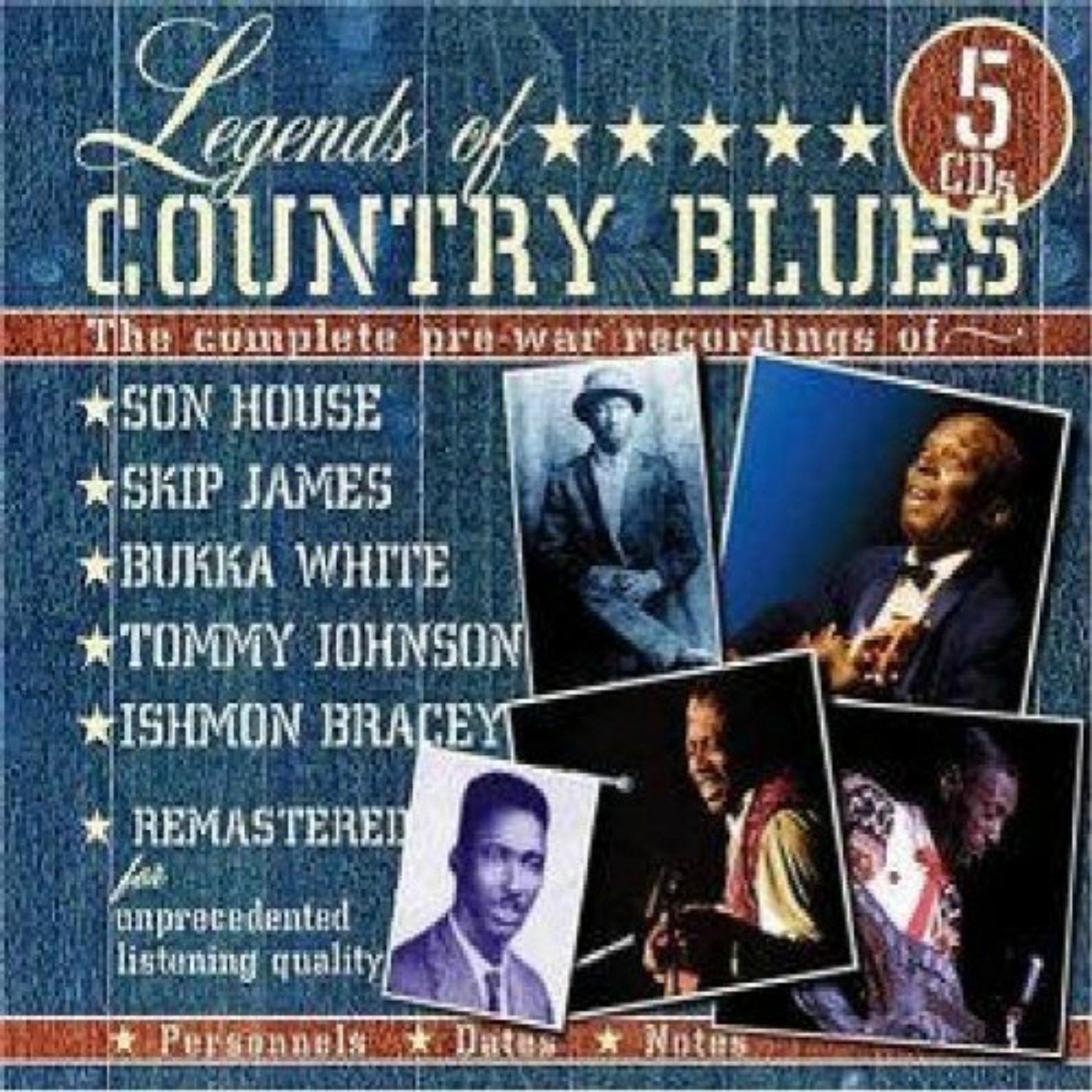
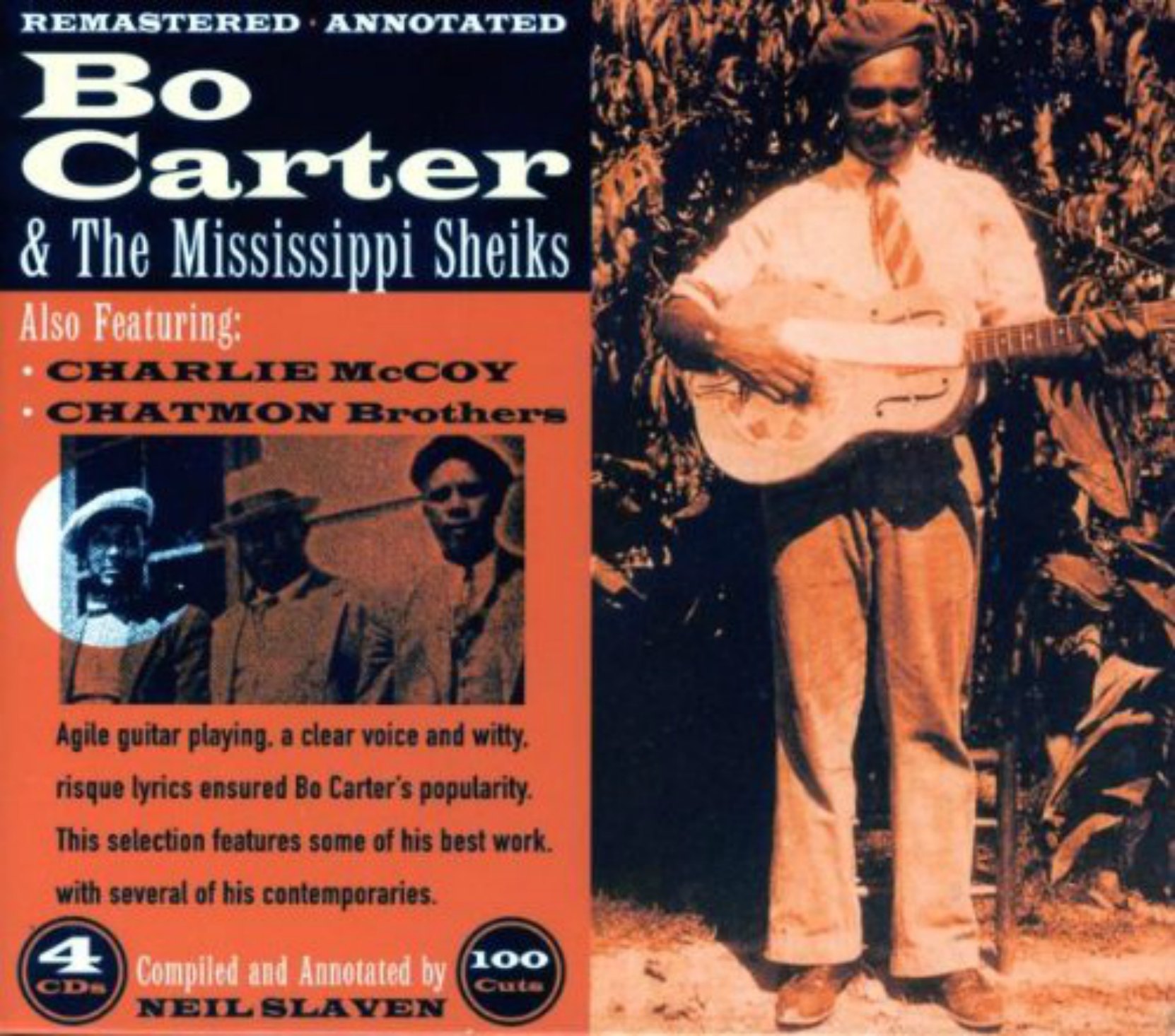
None of these JSP Records releases offers digital downloads of these sides. If you want digital downloads of these recordings we recommend these Yazoo Records digital download versions of the two Rube Lacey sides associated with Ralph Lembo:
For Digital Downloads of early Booker “Bukka” White recordings, we recommend Aberdeen Mississippi Blues: The Vintage Recordings (1930-1940) by Booker White on Document Records.
For Digital Downloads of the Mississippi Sheiks, we recommend:
- Mississippi Sheiks, Volume 1 1929-1930 on Document Records.
- Mississippi Sheiks, Volume 2 1930-1931 on Document Records.
- Mississippi Sheiks, Volume 4 1934-1936 on Document Records.
- Stop And Listen on Yazoo Records
Recommended Books

Gayle Dean Wardlow’s book Chasin’ That Devil Music has some interesting material about Ralph Lembo’s store and about Rube Lacey. We recommend this book to our readers but we recommend buying a new copy because it comes with a CD of rare blues recordings from Gayle Dean Wardlow‘s collection. The CD is typically missing from 2nd hand copies of the book.

David Honeyboy Edwards autobiography, The World Don’t Owe Me Nothing, has some information on Ralph Lembo and Ralph Lembo’s store.
It’s also well worth reading for anyone interested in blues history.
Would you like to leave a comment or question about anything on this page?